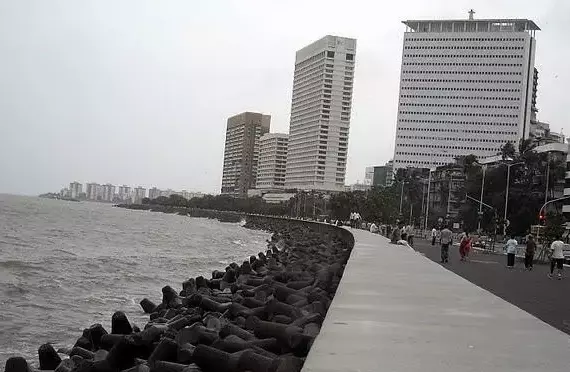

Rising sea may submerge Mumbai’s iconic Nariman Point, Cuffe Parade areas by 2050, says top official
<p>
By 2050, as much as 80 per cent of Mumbai&rsquo;s prime commercial and residential areas including iconic Nariman Point, Mantralaya, Cuffe Parade and Colaba will be submerged as the sea level is rising due to climate change, Birhan Mumbai Corporation Commissioner Iqbal Singh Chahal said on Friday.</p>
<p>
Other posh areas such as sea-facing Breach Candy are also set to face up to 70 per cent flooding by 2050 due to climate change.</p>
<p>
Speaking at the launch of Mumbai Climate Action Plan website, Chahal said warnings from nature, in the form of extreme weather events like torrential rain and cyclones are very clear.</p>
<p>
&ldquo;If we do not wake up, it will be a dangerous situation for the next 25 years. And it will not only be the next generation but the current generation will also suffer,&rdquo; he said.</p>
<p>
<strong>Also read:</strong>&nbsp;&nbsp;<a href="https://www.indianarrative.com/science-news/india-understands-climate-change-threats-better-than-the-developed-world-jaishankar-99063.html">India understands climate change threats better than the developed world: Jaishankar</a></p>
<p>
&ldquo;In the last 15 months, there have been three cyclones. On August 5, 2020, many parts of south Mumbai were submerged in up to 5-ft of water due to heavy rain. There was no cyclone warning that day but the situation was like a cyclone,&rdquo; Chahal said while referring to the flooding at Marine Drive and Chowpatty.</p>
<p>
He pointed out that the city is witnessing extreme weather events like heavy rain in very less time. This year, 70 per cent of July&rsquo;s average rainfall was received in just four days &ndash; from July 17 to 20. In May, while the average rainfall is zero, 200 mm of rainfall was recorded due to a cyclone.</p>
<p>
In recent years, Mumbai has been witnessing at least two to three days of extreme rainfall during monsoon. This year alone, on July 16 and 18, Mumbai recorded over 235 mm and 253 mm of rainfall, respectively, within a few hours leading to flooding in many parts of the city. It also faced the first extremely severe cyclonic storm Tauktae.</p>
<p>
Earlier a report from McKinsey India had stated that by 2050, Mumbai will see a 25 per cent increase in the intensity of flash floods and a 0.5 metre rise in the sea level, which will affect two to three million people living within 1 km radius of the coastline.</p>
The Indian Air Force will be phasing out phasing out its MiG 21 fighter jet…
Foreign Secretary Vikram Misri on Tuesday enlisted areas that have emerged as pillars of India-UK…
A British High Commission Spokesperson on Tuesday, expressed gratitude to the Indian authorities for the…
Prime Minister Narendra Modi will embark on a first State visit to Maldives for the…
A strong earthquake of magnitude 6.3 was recorded off the East Coast of Kamchatka, the…
India's core industries comprising eight sectors reported 1.7 per cent growth in June 2025, down…